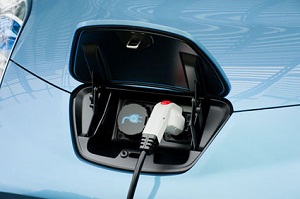Nissan installing solar-powered electric vehicle chargers
 Nissan North America is planning to roll out 30 new solar-powered electric vehicle charging stations that will both allow the public to charge up and provide energy storage research for the local utility.
Nissan North America is planning to roll out 30 new solar-powered electric vehicle charging stations that will both allow the public to charge up and provide energy storage research for the local utility.
Nissan released its electric vehicle, the Leaf, earlier this year and is now rolling out some infrastructure that will make it easier for visitors and employees to charge their electric Nissan Leafs at local Nissan facilities in Tennessee.
Nissan is working concurrently with Oak Ridge National laboratories (ORNL), Tennessee Valley Authority (TVA), Electric Power and Research Institute (EPRI) and Ecotality to design and install 125 Solar Assisted Charging Stations across the TVA region. EPRI and ORNL have already installed 30 of these stations at their Knoxville, TN locations. Nissan will install (30) of these stations at three sites: 1.) Nissan’s North American Headquarters in Franklin, TN 2.) Nissan’s Smyrna, TN Manufacturing site, 3.) Nissan’s New Lithium Battery plant located in Smyrna, Tenn. This will give community members and Nissan visitors a place to plug in, said John Harris, director of facilities and environmental engineering.
The project manager, Stacie Cain, said that Nissan and its partners decided to explore the solar option, rather than created grid-reliant charging stations for the public because all the program partners wanted to respond to utility concerns that electric vehicles could be a significant power consumer on the grid.
“We wanted to minimize our overall impact on the grid,” Crain said.
The Japanese auto manufacturer does most of its U.S. operations in Tennessee and has been working closely with the Tennessee Valley Authority, the local utility, and Oakridge Research Laboratories on this project.
“There is a bit of a demonstration element here as well,” Harris said of the companies planned solar car chargers. “We want to see how we can further reduce the demand on the grid by using the Nissan Leaf battery to store energy.”
Harris said the new charging stations would connect Nissan Leaf’s lithium-ion batteries to the solar panels to capture and save energy from them when they weren’t being used to charge an electric vehicle. Since the systems will be grid-connected, they could sell energy back into the grid during peak demand in the late afternoon and early evening after the sun has gone down.
In addition to providing some data testing on the possibility of using electric vehicle batteries as back-up energy storage for the grid, the research also provides a good second-life use for the vehicle batteries, Crain said.
He said that once the batteries have cycled all they can for a car, they still have about 60 percent capacity left and could be useful in energy storage.
The TVA, EPRI and ORNL locations will be utilizing lead-acid batteries for their energy storage, Harris said. The different testing could provide valuable battery comparisons, he said.



